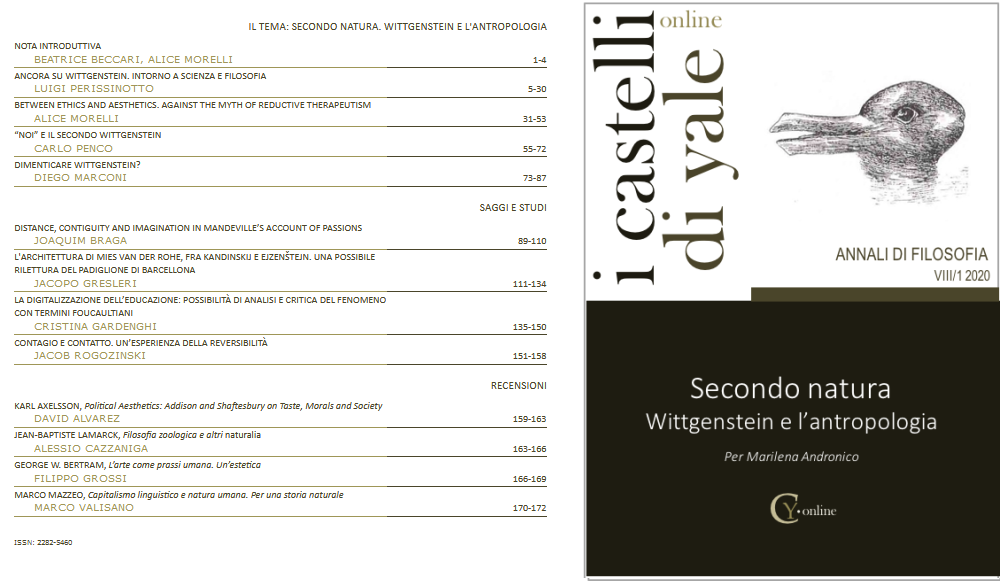L'ARCHITETTURA DI MIES VAN DER ROHE, FRA KANDINSKIJ E EJZENŠTEJN. UNA POSSIBILE RILETTURA DEL PADIGLIONE DI BARCELLONA
DOI:
https://doi.org/10.15160/2282-5460/2250Parole chiave:
Mies van der Rohe, Kandinskij, Ejzenštein, German Pavillon, Cinematographic architecture.Abstract
Following the principle of contamination of the arts, this text explores the artistic affinity between the work of Mies van der Rohe and that of Kandinskij and Ejzenštejn. The three masters, in their respective fields of expression, have investigated the different conceptions of space, coming to surprisingly similar conclusions. In support of this thesis, a universally recognized masterpiece of the Miesian production is analyzed here: the German Pavilion created for the International Exhibition in Barcelona (1929). The two volumes Punto, linea e superifice and Lezioni di regia, constitute the framework through which the reasoning is here developed.


